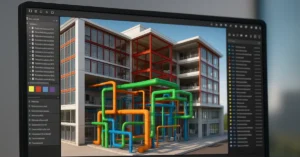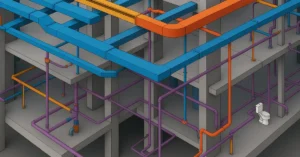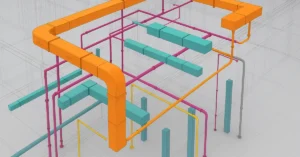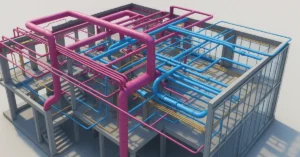Discover the stunning brutalist buildings in Riyadh
Riyadh, the vibrant capital of Saudi Arabia, is a city of contrasts—a place where ancient traditions meet rapid modernization. One of the most compelling aspects of this evolving cityscape is its embrace of brutalist architecture. Often misunderstood or underappreciated, brutalism in Riyadh represents a bold architectural journey that reflects the city’s ambitions, cultural shifts, and desire for a distinctive urban identity.
This blog explores the stunning brutalist buildings in Riyadh, highlighting their history, design principles, and cultural significance. From government buildings to cultural centers, these structures speak volumes about Saudi Arabia’s architectural experimentation and transformation over recent decades.
What is Brutalism and How Does It Manifest in Riyadh?
Brutalism is an architectural style that emerged in the mid-20th century, characterized by raw concrete construction, geometric shapes, and a focus on functionality. The term originates from the French phrase “béton brut,” meaning raw concrete. Globally, brutalism became popular for its honesty in materials and monumental presence.
In Riyadh, brutalism has adapted to local context, climate, and cultural elements. The harsh desert environment demands practical design choices, while the city’s rapid growth necessitated efficient construction methods. Riyadh’s brutalist buildings often blend traditional Middle Eastern design motifs with the style’s signature bold concrete forms.
Top Brutalist Buildings in Riyadh
1. Ministry of Interior Building
Located in the heart of Riyadh, the Ministry of Interior building stands as one of the city’s most iconic brutalist structures. Constructed during the 1970s, this government building uses heavy concrete panels and sharp angles to convey strength and stability. The building’s façade combines Brutalist solidity with subtle Islamic architectural patterns, merging modernism with heritage.
2. King Abdulaziz Public Library
The King Abdulaziz Public Library is an important cultural institution and a fine example of brutalism in Riyadh. Its massive concrete volumes create a fortress-like appearance, designed to protect valuable knowledge. The building’s interior spaces are spacious and minimalistic, emphasizing utility without sacrificing aesthetic impact.
3. Al Faisaliah Center (Brutalist Elements)
Though primarily known for its futuristic glass sphere and skyscraper design, the Al Faisaliah Center incorporates some brutalist elements in its base structures and concrete framework. These components emphasize durability and contrast sharply with the more refined upper sections, symbolizing Riyadh’s architectural diversity.
4. Riyadh Radio and Television Tower
The Radio and Television Tower blends functional brutalism with telecommunications technology. The concrete base and utility buildings feature rugged Brutalist shapes that resist the harsh climate and support the technical infrastructure of the city’s media hub.
5. Saudi Arabian Ministry of Education Headquarters
This building showcases brutalism adapted for administrative purposes. Its repetitive concrete modules and grid-like window placements provide a rhythmic visual impact. The building was designed for maximum efficiency and durability while also accommodating traditional cultural design elements.
6. Diplomatic Quarter Residences
In the Diplomatic Quarter, several residential complexes incorporate brutalist design principles. These apartment blocks rely on robust concrete structures to withstand desert conditions, while offering functional living spaces for international diplomats and residents. The focus on geometric forms and raw materials reflects a balance of austerity and modern comfort.
Why Brutalism Became Popular in Riyadh
Several factors contributed to the rise of brutalism in Riyadh. The city’s explosive growth in the mid to late 20th century required rapid, cost-effective construction solutions. Brutalist architecture, with its prefabricated concrete panels and minimal ornamentation, was ideal.
Moreover, the style aligned with Saudi Arabia’s ambitions to project power and modernity. The large, imposing concrete buildings symbolized state authority, stability, and progress. At the same time, architects and planners incorporated regional influences to root these modern forms in local culture.
Unique Challenges of Brutalist Architecture in Riyadh
Constructing brutalist buildings in Riyadh’s desert climate posed unique challenges. Extreme heat and sandstorms meant materials had to be durable and maintenance minimized. Architects used concrete not only for its raw aesthetic but also for its thermal mass, helping regulate interior temperatures.
The large, flat concrete surfaces often required special treatments or shading devices to reduce heat absorption. Incorporating traditional mashrabiya-style screens and deep-set windows became a way to balance brutalist starkness with climate responsiveness.
Cultural Impact and Public Perception
Public perception of brutalist buildings in Riyadh varies. Some see these structures as cold, oppressive, or outdated—symbols of a rigid past. Others admire their boldness, architectural honesty, and symbolic strength. There’s growing interest among architects, students, and cultural enthusiasts to study and preserve these buildings as part of Riyadh’s architectural heritage.
Tours and exhibitions highlighting brutalism in Riyadh have sparked renewed appreciation. The style’s raw beauty, often overshadowed by gleaming glass skyscrapers, offers a refreshing alternative perspective on urban identity.
Preservation and Future of Brutalist Buildings in Riyadh
As Riyadh modernizes rapidly, many brutalist buildings face threats of demolition or alteration. Balancing development with preservation is crucial. Some structures are being adaptively reused, transformed into museums, offices, or cultural venues, allowing their heritage to live on.
Architectural conservation groups advocate for recognizing brutalism’s contribution to Riyadh’s story. Future policies may encourage the preservation of key brutalist landmarks, integrating them thoughtfully with the city’s futuristic vision.
Brutalism as a Symbol of Identity
In Riyadh, brutalist architecture is more than a style—it’s a symbol of a transformative era. These buildings reflect the city’s desire to stand out, to build something monumental amid a harsh environment, and to reconcile tradition with modern aspirations.
Brutalist forms convey strength, resilience, and pragmatism—qualities resonant with Riyadh’s cultural narrative. As Saudi Arabia positions itself on the global stage, these architectural statements continue to evoke pride and reflection.
Conclusion
Brutalist buildings in Riyadh reveal a captivating chapter of Saudi Arabia’s architectural evolution. They embody the city’s ambitions, challenges, and cultural identity through their bold, concrete presence.
Though opinions on brutalism may differ, these structures deserve recognition for their innovative adaptation to Riyadh’s climate, society, and history. Preserving and celebrating these brutalist landmarks offers an opportunity to appreciate a daring architectural language that continues to inspire and provoke.
As Riyadh strides into the future, its brutalist buildings stand as concrete testaments to a bold past and an even bolder future.
If you’re interested in learning more about architecture firms in Europe, check out this comprehensive list of the top 50 firms compiled by Archgyan. From innovative startups to long-established industry leaders, this list has it all. Take a look and discover some of the most inspiring and influential architecture firms in Europe today.
If you’re interested in architecture and want to learn more about this amazing field, subscribe to our podcast on youtube
For more SketchUp tutorials, head to https://www.sketchupguru.com










